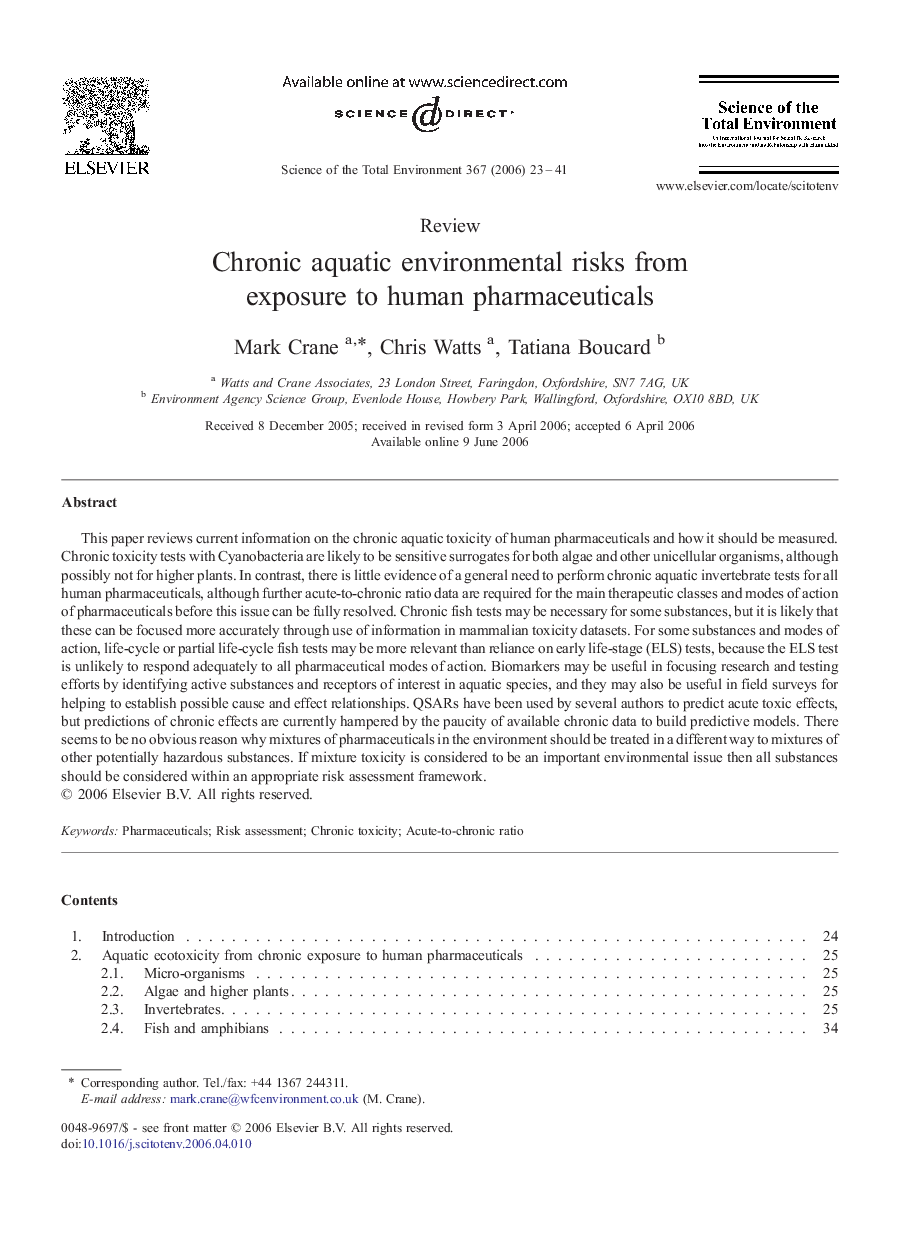| Article ID | Journal | Published Year | Pages | File Type |
|---|---|---|---|---|
| 4433978 | Science of The Total Environment | 2006 | 19 Pages |
This paper reviews current information on the chronic aquatic toxicity of human pharmaceuticals and how it should be measured. Chronic toxicity tests with Cyanobacteria are likely to be sensitive surrogates for both algae and other unicellular organisms, although possibly not for higher plants. In contrast, there is little evidence of a general need to perform chronic aquatic invertebrate tests for all human pharmaceuticals, although further acute-to-chronic ratio data are required for the main therapeutic classes and modes of action of pharmaceuticals before this issue can be fully resolved. Chronic fish tests may be necessary for some substances, but it is likely that these can be focused more accurately through use of information in mammalian toxicity datasets. For some substances and modes of action, life-cycle or partial life-cycle fish tests may be more relevant than reliance on early life-stage (ELS) tests, because the ELS test is unlikely to respond adequately to all pharmaceutical modes of action. Biomarkers may be useful in focusing research and testing efforts by identifying active substances and receptors of interest in aquatic species, and they may also be useful in field surveys for helping to establish possible cause and effect relationships. QSARs have been used by several authors to predict acute toxic effects, but predictions of chronic effects are currently hampered by the paucity of available chronic data to build predictive models. There seems to be no obvious reason why mixtures of pharmaceuticals in the environment should be treated in a different way to mixtures of other potentially hazardous substances. If mixture toxicity is considered to be an important environmental issue then all substances should be considered within an appropriate risk assessment framework.
